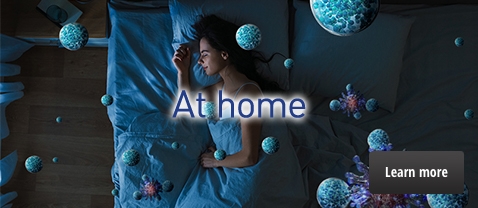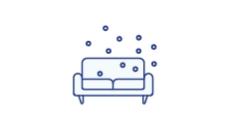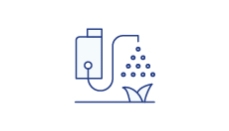Is the air you work in purified?
We spend a lot of time indoors, sometimes in spaces without a lot of airflow. So inhibiting certain bacteria and viruses with nanoe™ X is important.
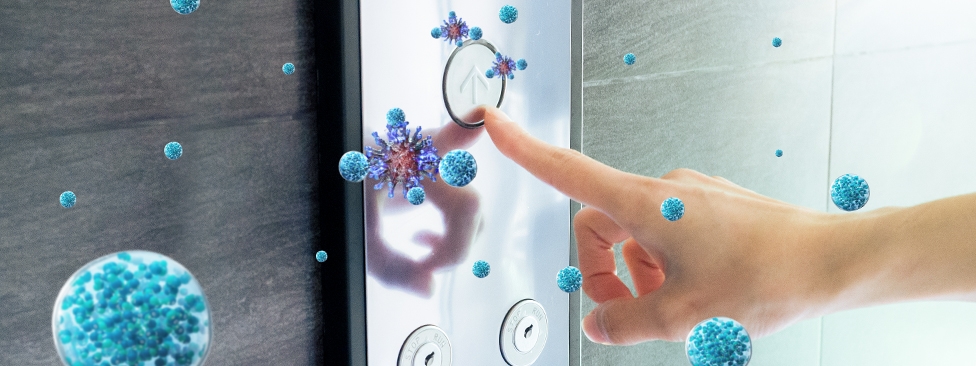
Effective on adherent viruses
nanoe™ X is effective not only against certain airborne viruses, but also certain viruses attached to things you often touch, such as doorknobs, tables, and chairs.
Effects on certain bacteria & viruses
Airborne bacteria
Staphylococcus aureus1

Airborne viruses
bacteriophageΦχ1744
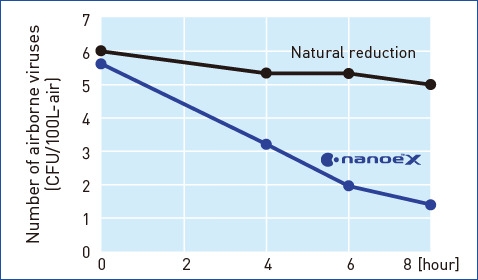
Adhered bacteria
O1572
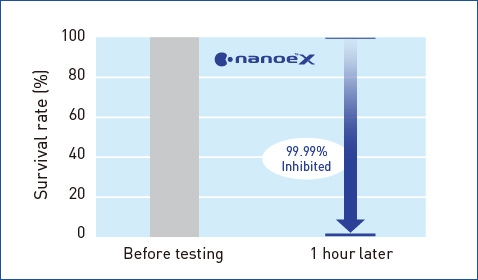
Adhered viruses
Influenza virus H1N1 subtype5

MRSA3
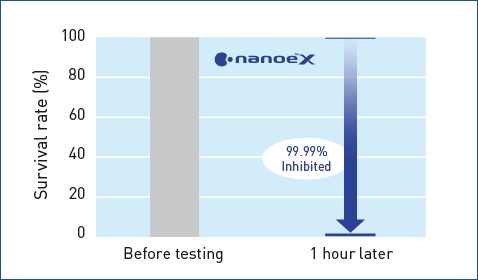
Poliovirus type1 (Lsc-2ab)6
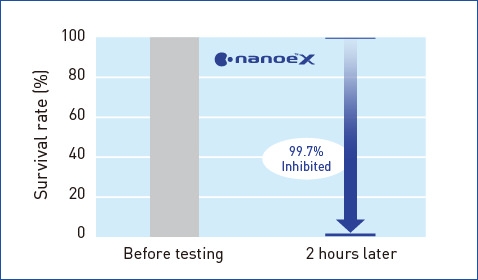
How nanoe™ X works
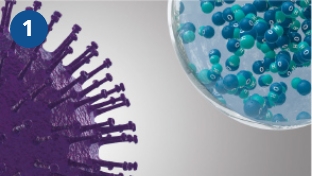
nanoe™ X reaches virus.
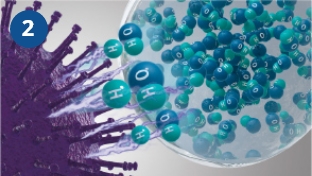
Hydroxyl radicals denature virus proteins.
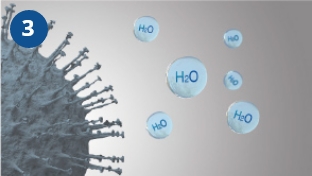
Virus activity is inhibited.1–6
The effects of nanoe™ X products can only be expected in the room where the product is placed, and vary depending on room size, environment and usage. It may take several hours for nanoe™ X to reach its full effect. nanoe™ X products are not medical devices. Local building design and sanitation regulations must be respected.
1Airborne bacteria (Staphylococcus aureus). Testing organisation: Kitasato Research Center for Environmental Science. Testing method: The number of bacteria was measured after direct exposure in an approximately 25 m3-sized airtight test chamber. Inhibition method: nanoe™ released. Target substance: Airborne bacteria. Test result: Inhibited by at least 99.7% in 4 hours. (24_0301_1)
2Adhered bacteria (O157). Testing organisation: Japan Food Research Laboratories. Testing method: Measured the number of bacteria adhered to a cloth in an approximately 45 L-sized airtight test chamber. Inhibition method: nanoe™ released. Target substance: Adhered bacteria. Test result: Inhibited by at least 99.99% in 1 hour. (208120880_001)
3Adhered bacteria (MRSA). Testing organisation: Japan Food Research Laboratories. Testing method: Measured the number of bacteria adhered to a cloth in an approximately 45-L-sized airtight test chamber. Inhibition method: nanoe™ released. Target substance: Adhered bacteria. Test result: Inhibited by at least 99.99% in 1 hour. (208120880_002)
4Airborne viruses (bacteriophageΦχ174). Testing organisation: Kitasato Research Center for Environmental Science. Testing method: The number of viruses was measured after direct exposure in an approximately 25 m3-sized airtight test chamber. Inhibition method: nanoe™ released. Target substance: Airborne viruses. Test result: Inhibited by at least 99.7% in 6 hours. (24_0300_1)
5Adhered virus (Influenza virus H1N1 subtype). Testing organisation: Kitasato Research Center for Environmental Science. Testing method: Measured the number of viruses adhered to a cloth in an approximately 1 m3-sized airtight test chamber. Inhibition method: nanoe™ released. Target substance: Adhered viruses. Test result: Inhibited by at least 99.9% in 2 hours. (21_0084_1)
6Adhered viruses (Poliovirus type1(Lsc-2ab)). Testing organisation: Kitasato Research Center for Environmental Science. Testing method: Measured the number of viruses adhered to a cloth in an approximately 45 L-sized airtight test chamber. Inhibition method: nanoe™ released. Target substance: Adhered viruses. Test result: Inhibited by at least 99.7% in 2 hours. (22_0096)
Results may vary based on usage and seasonal and environmental variables (temperature and humidity). nanoe™ X and nanoe™ inhibit activity or growth of pollutants, but do not prevent illness.

